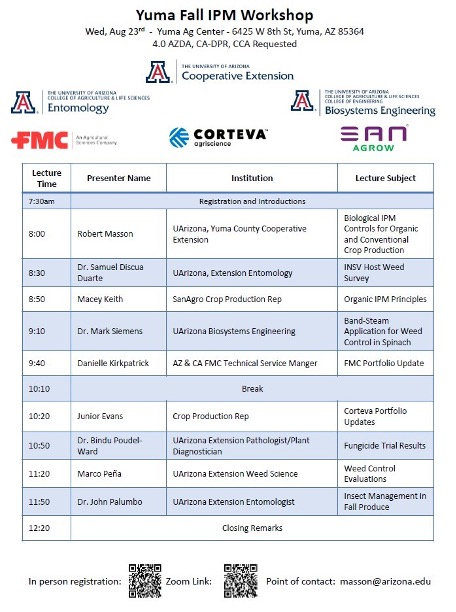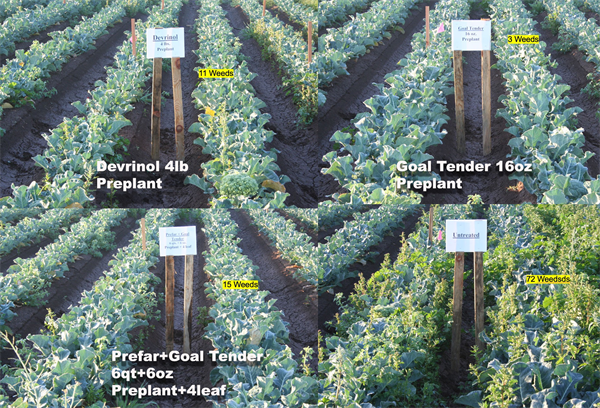-
Sep 7, 2022Let the Produce Season BeginSummer is finally over. Brassica transplants are in the ground, and direct-seeded broccoli and lettuce plantings are now beginning. In the past week, I’ve observed or received reports from PCAs of key insect pests beginning to show up (or not) on melon and early produce crops in the desert.
Seedling pests: Flea beetles (FB) are beginning to show up in transplanted crops like they always do, but pressure has been light so far. We haven’t seen much in our experimental plots at YAC either. Remember, FB adults lay eggs in the soil of their favored local host plants (i.e., alfalfa, cotton, purslane, pigweed and nightshade) where larvae feed on the roots to later emerge as adults. So, keep in mind, the source of that FB infestations hitting your new stands may not just be freshly cut hay, defoliated cotton, or disked weeds. In some areas (Yuma Valley), crickets seem to be very abundant. Crickets like moisture and are often found under sprinkler pipes but can also be found in cracks in soils around fields or in drainage areas.
Bagrada bug: We’ve already had reports of bagrada bug adults on two transplanted cauliflower fields in Dome Valley. Not sure whether they arrived with the transplants or are moving from surrounding crops. However, it’s still early and they might surprise you as the season progresses. Look for those fresh feeding signs on cotyledons and young leaves. Experience suggests that they are most abundant after the humidity breaks.
Lepidopterous Larvae (worms): Worm pressure seems to be below normal. Trap catches so far show that Cabbage looper moths are almost non-existent, and no reports on melons to date. They should pick-up as we approach October. No reports of Beet armyworm larvae on the earliest transplants yet, and areawide pheromone traps suggest that moth activity is below normal. But they will show up sooner or later, so get ready. You have numerous insecticide alternatives at your disposal to control them. Have had a couple of reports of Diamondback moth larvae on newly transplanted brassica crops. However, we’ve yet to capture moths on pheromone traps which suggests that adult immigration on high altitude winds associated with storms has not occurred. Remember, DBM disappear each summer and reestablish on desert crops via transplants or migrate in on monsoon/tropical storms. I strongly stress that you check your Cole crops closely this fall, particularly following storms or on plants originating from coastal CA.
Whiteflies: Area wide sticky trap captures have been about normal for early September, but whiteflies can migrate long distances on high winds. Adult numbers increased on my melon plants last week and remain high. Reports in area melons range from light to moderate numbers so far, but there is still a lot of cotton out there yet to be picked. The good news is there are several insecticide alternatives to control them in produce.
To contact John Palumbo go to: jpalumbo@ag.Arizona.edu













